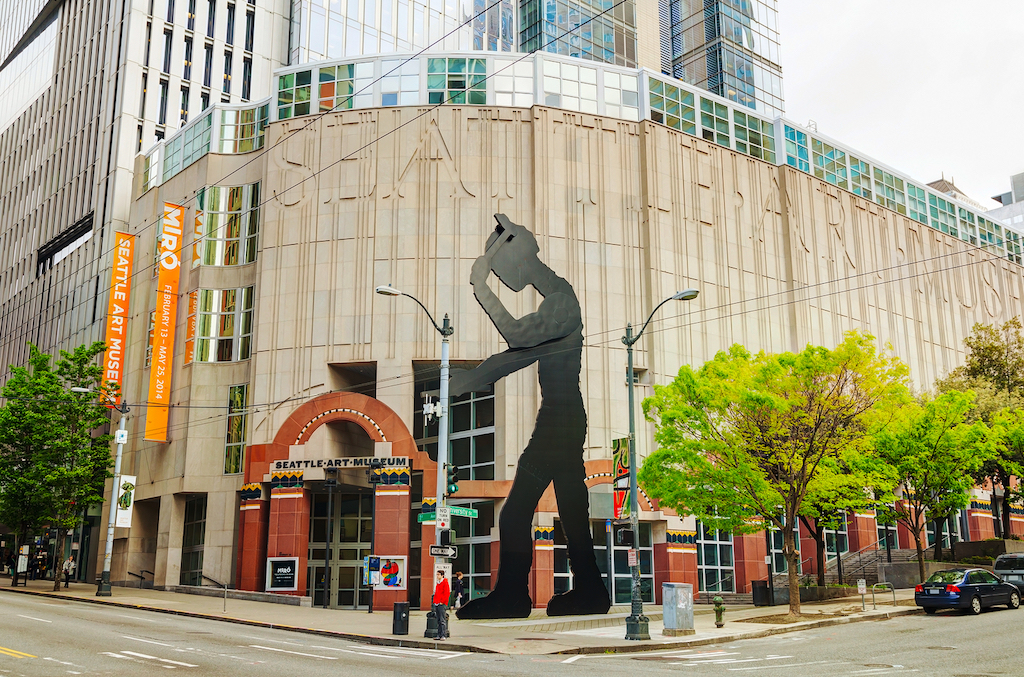On June 18, we were joined by Regan Pro, the Kayla Skinner Deputy Director for Education and Public Engagement at Seattle Art Museum (SAM). SAM is one museum in three locations: it’s building in Downtown Seattle, the Seattle Asian Art Museum in Volunteer Park, and the Olympic Sculpture Park in Belltown. Each year, SAM serves 800,000 people; its mission is to connect art to life. SAM strives to make their global collections relevant, interesting and impactful to all the communities that interact with it .

First, we wanted to know what SAM’s world looks like during the pandemic. Regan shared that, broadly, a museum’s role is tied to making sense of what it means to be human, to tell stories about the human condition and amplify our common humanity. Museums can also provide a space for reflection, and show how people persevere and transcend crises. In recent weeks, as the ongoing crisis of systemic racism is in the national spotlight, museums have an opportunity to think critically about who they’ve historically represented and welcomed. On a more practical level, all of SAM’s indoor locations are closed and that’s forced them to rethink their potential audience. Looking ahead, we can assume that tourism will be significantly reduced in the near future, giving museums an opportunity to focus on more local engagement. Internally, SAM is grappling with the collective, historical and individual traumas that staff are experiencing and how to manage that as an employer.
Given all of the above, we asked what Regan expects will be different about the museum’s programming going forward. Regan explained that SAM has been focused on racial equity for many years, with support from leaders at the City of Seattle’s Office of Arts and Culture and people like Sandra Jackson-Dumont and Dr. Sheila Edwards Lange. As we emerge from the pandemic, SAM is focused on not being reactive to the current moment but continuing to build on the systems change work they’ve been doing. However, as protests and demonstrations drive public discourse, and the pace of change potentially accelerates, there’s still a sense of “building the plane as we fly it.” Post COVID-19, Regan imagines that the imperative for arts organizations to prove themselves essential to the social good of communities — whether through healing, community building and/or as spaces for expression — will be of utmost importance. Organizations will have to demonstrate that they are meeting community needs in an anti-racist way.
Regan reflected on the role of the arts in social movements, pointing to local artists like Aramis Hamer and Kimisha Turner who contributed to the Black Lives Matter mural on E. Pine Street. The mural has gotten national exposure across a broad political spectrum — this is an example of how art can contribute to changing hearts and minds by giving audiences an empathetic window into other people’s lived experiences. Regan also talked about the rise of art as social practice in the last 20-30 years, giving the example of Theaster Gates’ Dorchester project.
An audience member asked about representation at SAM and how it reflects the communities it serves. Regan shared that it’s an ongoing balance the museum is trying to strike: examining the history of the museum as a white space, how to disrupt that and make room for other voices without being tokenistic, and when it is effective and necessary for white leaders to step up.
We also wondered about the role of technology in SAM’s operations and programming. Regan cautioned that due to budget and capacity constraints, arts organizations are often playing catch up on technological advances. They’ve also had to adapt as more artists use technology as a medium for their work. She also welcomed the opportunity technology provides for programming to be less formal as things like curator talks have moved online.
Another audience member asked about how SAM is intentionally targeting underserved communities. Regan invited us to unpack the term “underserved,” wondering how much self-determination there is in defining “under service.” However she acknowledged a fear that SAM’s work with public schools (which already have limited arts education) could suffer significant setbacks depending on what learning looks like going forward. She encouraged the audience to advocate that arts education be an integral part of students’ learning, regardless of the format school takes in the future.
Other actions Regan suggested for people who care about having a thriving arts community were:
- Show up. Even though we can’t show up in person, arts organizations are still organizing online events, taking surveys, etc. — participate as much as you can.
- Advocate. Make your enthusiasm for the arts visible to your spheres of influence — your child’s school, your local library, your light rail station.
- Give, you have capacity. The pandemic has decimated arts organizations’ budgets, financial support can go a long way.
